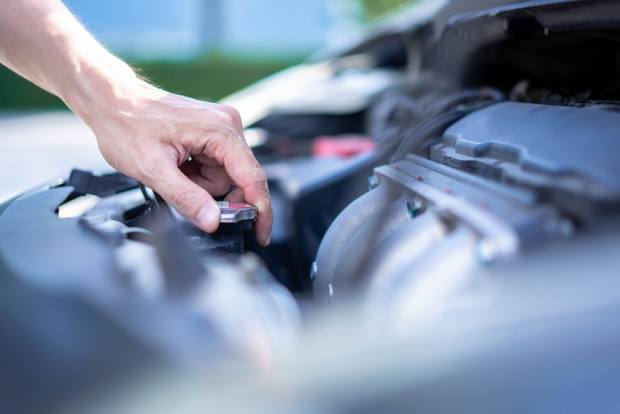
- #Check coolant level how to#
- #Check coolant level cracked#
- #Check coolant level manual#
- #Check coolant level crack#
To repair it, you have to replace the whole engine block.
#Check coolant level crack#
These hotspots can cause extreme temperatures in the engine block, which can actually cause it to crack, and a crack in the engine block or cylinder head is the last thing you want. As we told you before, low engine coolant can create hotspots in the cooling system.
#Check coolant level cracked#
Damaged Engine blockĪn even more serious issue that can occur if you drive with a low engine coolant is a damaged or cracked engine block. Related: Symptoms of a Bad Head Gasket 4. Replacing the head gasket is often quite expensive, and you can expect repair costs of over $1000 however, it is nothing compared to what comes next. The head gasket is located between the engine head and the cylinder head its purpose is to separate compression, oil, and coolant.

Blowing the head gasketĪ very common thing that can happen when your engine overheats due to low engine coolant is a blown head gasket. Overheating Engineīecause of the airlocks in the coolant system that we talked about before, the water pump will not pump around the coolant to keep the engine at a good temperature, and this will cause the engine to overheat.Īn overheating engine can cause many expensive issues with your engine, which we discuss in the next sections. The first thing that could happen if you drive around with low coolant is that the water pump will pump air into the coolant system, which will cause airlocks in the coolant system.Īirlocks will cause the cooling system’s flow to be disturbed, which will cause an overheating engine. Here is a more detailed list of what can happen if you ignore & drive around with a low engine coolant level: 1.

An overheating engine can lead to a blown head gasket or a damaged engine block. The most common consequence of driving with a low engine coolant is air in the cooling system, resulting in an overheating engine. Consequences of Driving With Low Engine Coolant Level You will find more possible symptoms further down in the article, but first, let’s take a look at the consequences of driving with a low engine coolant level. Just topping up the coolant level should never be a long-term solution. The leaks can come from leaking hoses, sensors, or gaskets. The most common reason for a low coolant level is a leaking cooling system. Faulty EGR cooler What Causes A Low Coolant Level?
#Check coolant level how to#
In that case, you may either take a look at the coolant reservoir as explained above and add some coolant to it or have it brought into an auto maintenance shop if you are not sure how to refill the coolant.5. Or, if you see your engine coolant warning light lit on the dashboard, this also indicates either your coolant level is low, or your vehicle overheats due to some error in your cooling system. Bring the level to F, but do not overfill. Again, before you do that, you need to make sure the engine is cold, and there isn't too much pressure built up inside. If the fluid is close to or below the L marking then you need to add more coolant to the reservoir. On the side of the reservoir, it has an L(low) and F(full) markings, and as the tank is translucent, you can see your coolant level without opening the cap.
#Check coolant level manual#
The owner's manual also specifies the proper coolant for your vehicle to protect against freezing and corrosion. If you can't find it, consult your owner's manual as it should explain where it is located. As the reservoir cap is labeled as coolant, it's easy to find it. Once you open your hood, locate the coolant reservoir. So always make sure your cooling system is cold before you start inspecting your coolant level. If you do it while it's hot, hot coolant can shoot out of it, and that can lead to a bad burn. If the automobile is hot, that means it's under high pressure, and opening the reservoir cap can be extremely dangerous. If your car has been running in a while, your engine, radiator, and reservoir become very hot and, you do not want to touch the reservoir cap or radiator hoses before they're completely cooled down. When checking your coolant level, the first thing you need to know is you shouldn't check it if the engine is still hot.

Before you go to check your coolant level


 0 kommentar(er)
0 kommentar(er)
